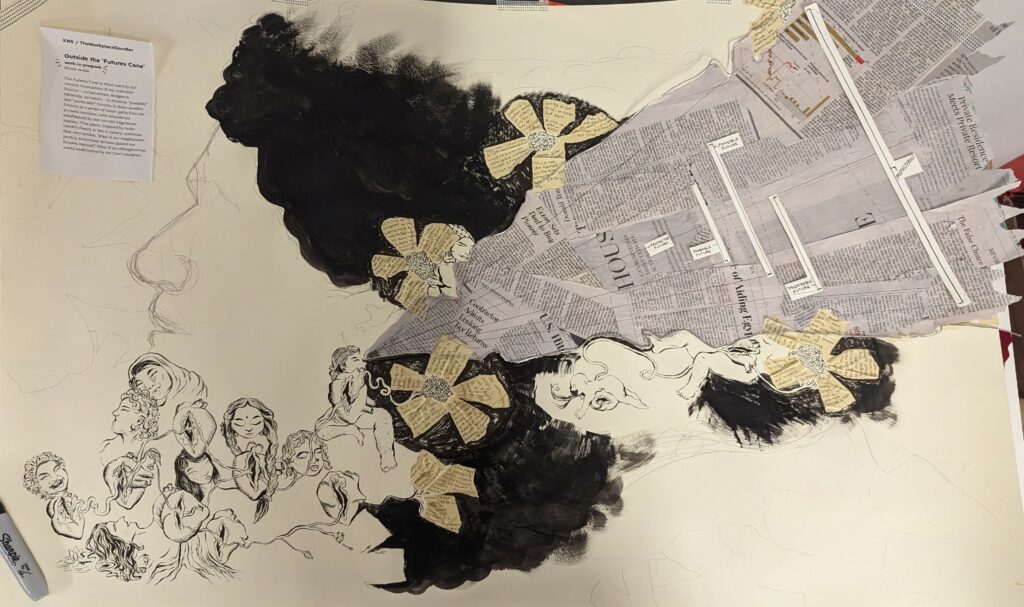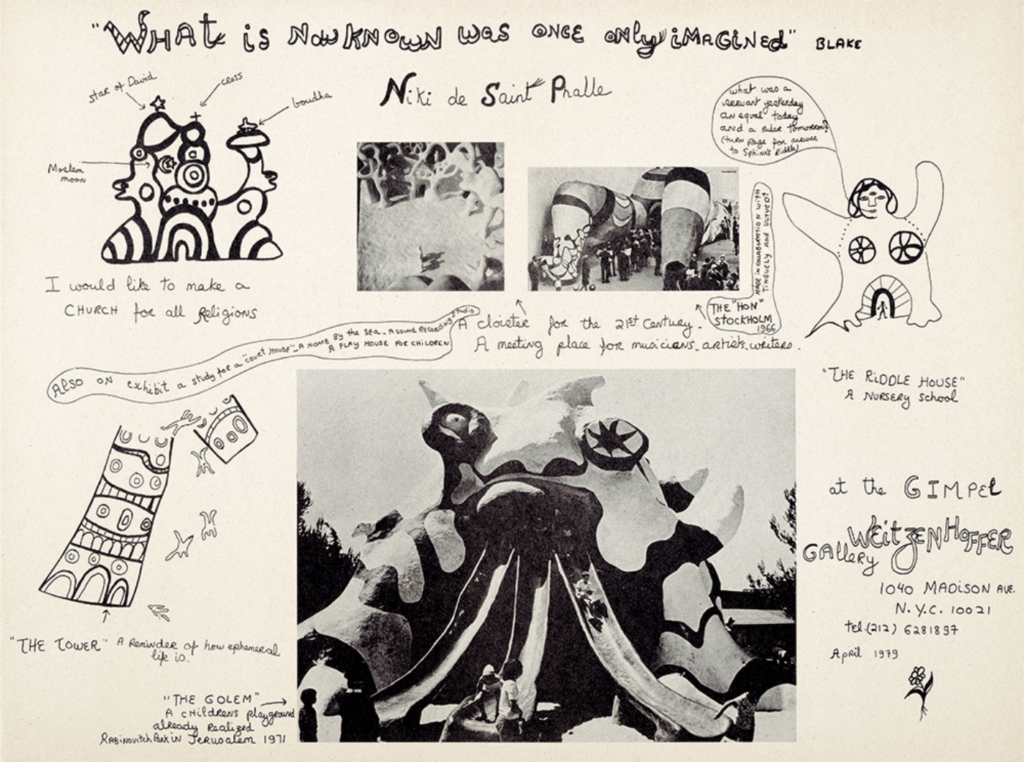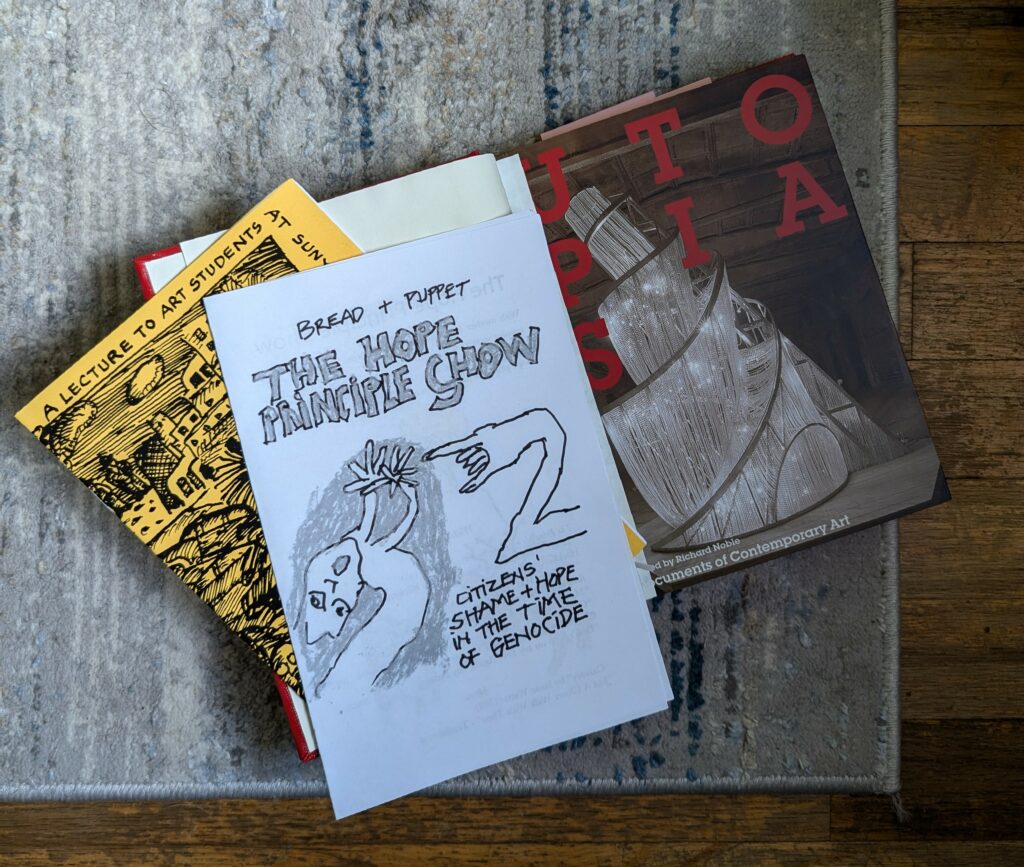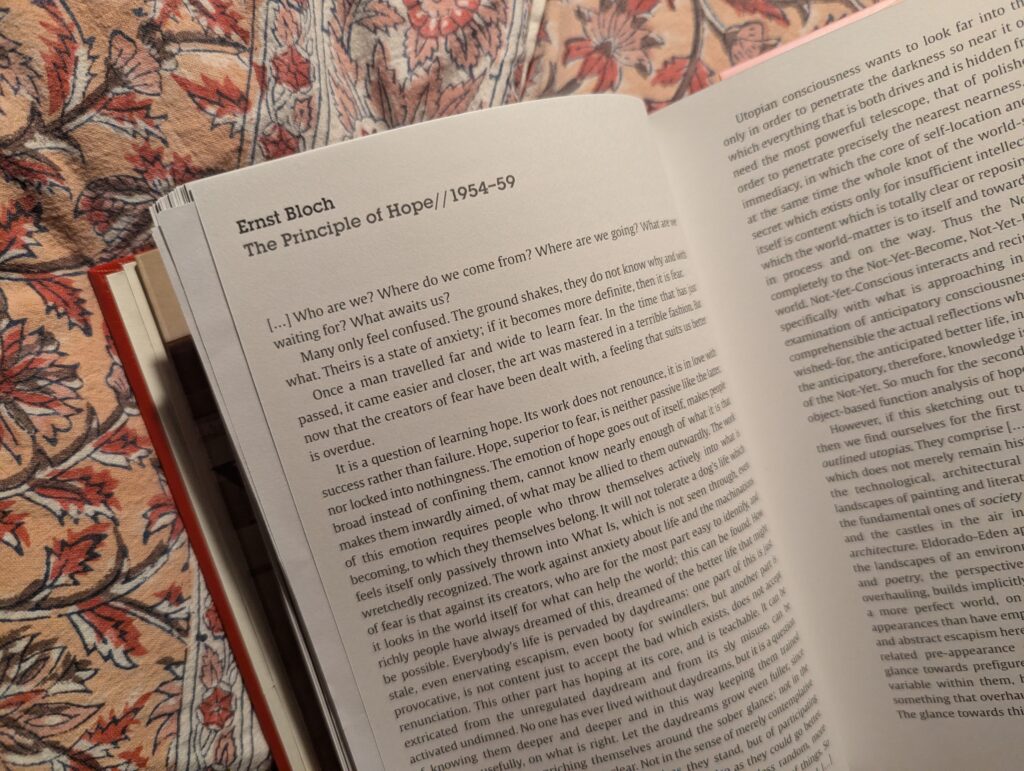When we dream of a utopian future, what does it do to our reality?
Does it alter the space around us where the air feels different? Magical even? Is our pulse altered? Do we breathe a bit differently?
When just the simple act of imagining a dream — a dream where existing differently can hold enough power to shift the staticness of our lives, engulfing us with a moment of Eureka!, our reality is altered. The imagined dream gives us enough power to exclaim — “YES, I know where to go!”
The mere act of dreaming, however, doesn’t really tell us how to get to that point. After all, dreams aren’t maps. But they can be compasses. The compass doesn’t point how far, but it points us in a direction. It is this liminal space that the pointer of the compass occupies — between a dream for the future and the future itself — that I’m interested in. For in this liminal space, exists art.

This summer, I set out to create “objects” from feminist imaginations of future worlds — of feminist utopias.
The plan was simple:
1. I would read feminist literature, like Sultana’s Dream (1905), Parable of the Sower (1993), and many others I can’t wait to dig into.
2. I would pull out objects from these feminist worlds.
3. I would then concoct what those objects might look like, in our “real” world — as scrapbooks, sculptures, artifacts — thus filling a bit of the real world with that imagined feminist world. The imagined would slowly become the real.
By breathing life into what was once imagined, it could perhaps bring those worlds closer to reality. Wasn’t it Niki de Saint Phalle who famously said, “What is now known was once only imagined?”

It was not as simple as planned.
The armour of simplicity I had built to satiate my curiosity as quickly as possible was challenged in equal if not more speed. Earlier this summer, I had the pleasure of witnessing Bread & Puppet theatre collective’s profound performance, The Hope Principle Show: Citizens’ Shame + Hope in the Time of Genocide (2024). The performance leaned heavily into Ernst Bloch’s The Principle of Hope (1954), something I was introduced to only then, and something that has complicated my simple summer plan. In Bloch’s words, “Utopian consciousness wants to look far into the distance, but ultimately only in order to penetrate the darkness so near it of the just lived moment, in which everything that is both drives and is hidden from itself. In other words: we need the most powerful telescope, that of polished utopian consciousness, in order to penetrate precisely the nearest nearness.”
Is our idea of utopia merely based on our immediate needs? What does he mean by “nearest nearness” and how do we move closer to building that “telescope”? Bloch brings up ideas of utopian consciousness, which has made me pause and wonder: how do I situate the term “utopia” in my search for otherworldly utopian objects?
With great urgency, I checked out a book from the library — Utopias: Documents of Contemporary Art (2009). I hope to dig into it for the next few weeks, alongside the feminist fiction works I thought were my only summer reads.
And to nobody’s surprise, just a few pages in, was Mr. Bloch.

